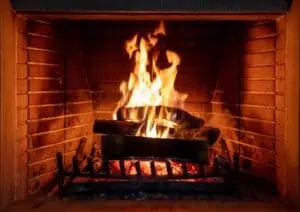What Is the Maintenance Schedule For Gas Fireplace Inserts?
A gas fireplace insert requires regular maintenance. While some maintenance can be done by a homeowner, most can be done by a professional. In order to avoid problems, homeowners should establish a schedule and keep a record of the tasks and activities they perform. This will help a safety inspector determine how the fireplace is being used and can reduce the time it takes for an inspection. Failure to maintain a gas fireplace can result in costly repairs or even replacement.
(Searching in Google “gas fireplace maintenance companies near me“? Contact us today!)

Check lava rocks
When maintaining a gas fireplace insert, it is important to check the lava rocks to make sure they’re positioned properly. The rocks should be spaced slightly apart, with one row touching the bottom edge. This will prevent heat loss. In addition, the rocks should be evenly spaced on the grate.
Lava Rocks are the best natural heat-retentive materials that can be used in gas fireplaces. They also give a room an ambiance that is truly unique. These rocks are made from volcanic lava, which makes them more durable than normal rocks. Lava Rocks are easily installed into a gas fireplace.
Lava rocks are an inexpensive and attractive way to upgrade the look of a gas fireplace. If placed properly, they can increase the look and performance of your fireplace. Just be sure to follow a few steps to ensure the rocks are placed correctly and are functioning properly. While there are a lot of benefits to adding lava rocks to your gas fireplace, you should make sure they’re properly placed to avoid potential safety issues.
While maintaining a gas fireplace, you should also check the lava rocks and decorative logs periodically. These may have dust on them. When cleaning, use a hose attachment vacuum to vacuum out the dirt and debris from the lava rocks. You can cover the hose nozzle with a piece of cheesecloth to prevent rocks from being sucked into the vacuum hose. Once you’ve cleaned the rocks, you can use an old cloth to clean the burner’s pilot light and gas line components.
Check chimney
Before using a gas fireplace, be sure to check the chimney’s maintenance schedule. It’s important to do this regularly to keep your gas fireplace running properly and prevent accidents. It’s also important to check the surrounding walls for any signs of problems. Look for white stains or bubbling paint, or if the bricks have become damaged. If you find any of these things, call a professional right away to have the fireplace fixed.
Before you begin using your gas fireplace, make sure that you have a carbon monoxide detector installed. You should also check the masonry and walls of the chimney to look for condensation. These two issues could cause a fire. If they are present, contact a certified technician right away to make sure your safety is not jeopardized.
If you have a traditional gas fireplace, your chimney and vents should be cleaned annually. For masonry models, cleaning is simple, but cleaning vents requires more time because of offsets. In addition, check the condition of the interior firebrick and flue and pay particular attention to excessive soot and ash buildup. You should also check the exterior chimney for cracks and debris. You should also change the batteries in your carbon monoxide detector if necessary.
If you don’t regularly clean the chimney, it may be time for a repair. You should first check the chimney’s outer structure and interior walls. If you notice condensation or water buildup, you should have the chimney cleaned. Moisture can damage walls and ceilings. You should also clean the gas ignition ports. This should be done by turning off the gas and cleaning them with steel wool or fine-grit sandpaper.

